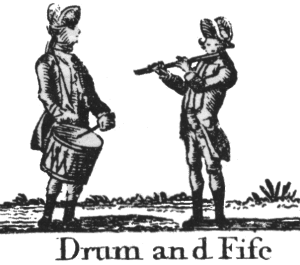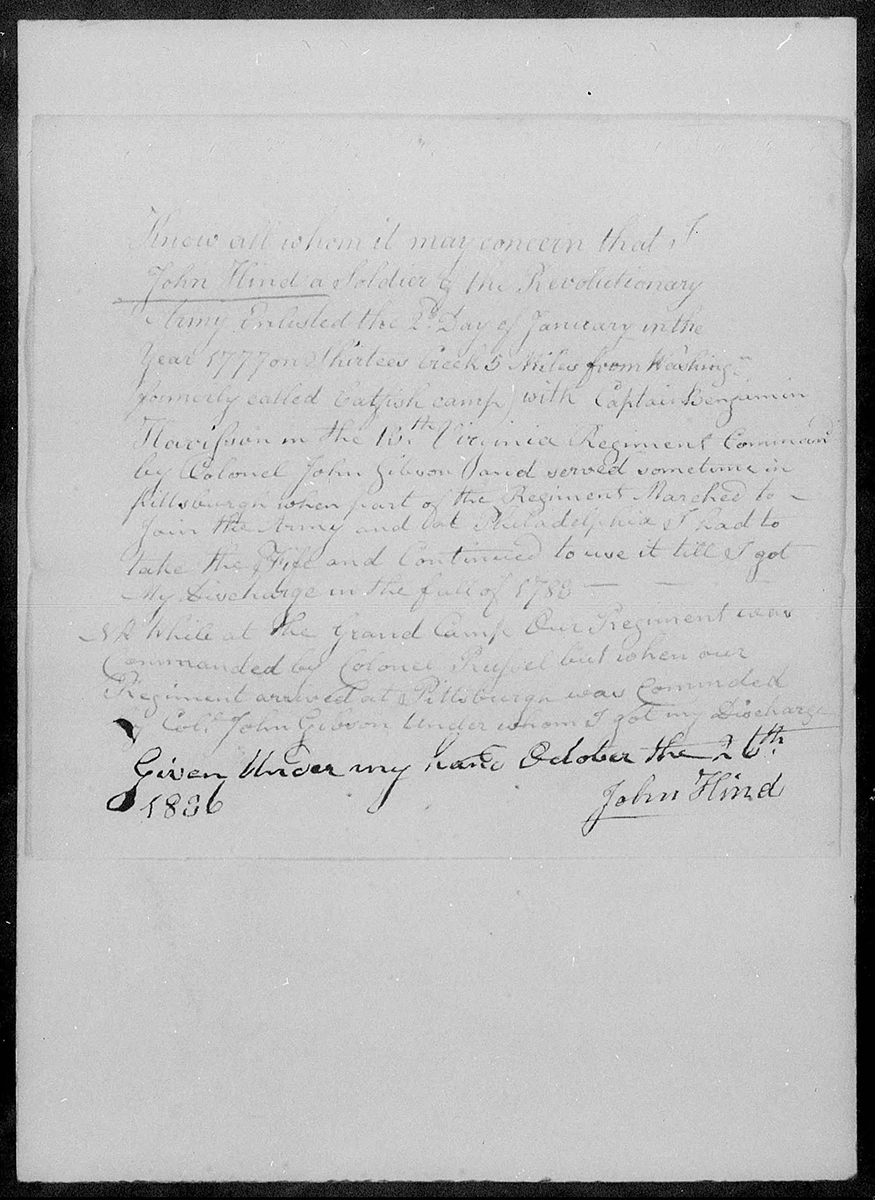 In the 18th century military, fifers and drummers played a pivotal role at Fort Pitt. They not only announced daily routines for the military but also indirectly served as a morale booster. A few skilled gentlemen with knowledge of 18th century fifing and drumming have formed a group to teach Fort Pitt Museum visitors about the subject this summer.
In the 18th century military, fifers and drummers played a pivotal role at Fort Pitt. They not only announced daily routines for the military but also indirectly served as a morale booster. A few skilled gentlemen with knowledge of 18th century fifing and drumming have formed a group to teach Fort Pitt Museum visitors about the subject this summer.
Drumming calls that would have been known at Fort Pitt 250 years ago directed the soldiers specific duties, such as when to get up (reveille), work (the fatigue march), and go to sleep (tattoo). In Sept. 1761, Lt. Elias Myer, a Royal American officer and engineer stationed at Sandusky, wrote to Col. Henry Bouquet: “The Drummer accidently broke his drum, which cannot be repaired. This is a great loss to the work, as the men are widely scattered in the woods every day, and it is very difficult to call them in without a drum.”
While on the march or in camp, the calls coming from the fifes and drums also indirectly boosted morale. Samuel Dewees, stationed at West Point during the American Revolution, explained:
There was always a great difference manifested in the manner of attending the calls, “Fatigue’s March,” and “Roast Beef.” The soldiers at the Fatigue’s call generally turned out slowly and down hearted to muster upon fatigue parade. When an officer would sing out, “‘Orderly Drummer,’ beat up the ‘Roast Beef,’” and the musician fairly commence it, the soldiers would be seen skipping, jumping and running from their tents and repair to where the rations were to be issued out. That there would be a difference manifested will not be wondered at when it is stated that the Fatigue Men had to muster for the purpose of going to labor, chop, dig, carry timber, build, etc., etc., whilst the others would turn out voluntarily to learn what they were to draw for breakfast, dinner, etc.
The number of fifers and drummers at Fort Pitt varied from year to year. The largest numbers were probably seen during the French & Indian War on the Forbes Campaign. Documents dated Oct. 3, 1758 show 106 drummers and 17 fifers belonging to the almost 7,000-man army. Eight of those drummers and five of those fifers belonged to the First Battalion of Royal Americans. On average, however, there were considerably fewer fifers and drummers at Fort Pitt than elsewhere in America. During the American Revolution in 1777, for example, documents show a total of five fifers and drummers. Of the five, two drummers (John Whitman and Richard Earls) and one fifer (Andrew Glass), belonged to Henry Heath’s Independent company of Virginia. Another drummer (John Smith) and fifer (Thomas McElwain) belonged to a detachment of the 13th Virginia.
From sewing their own uniforms to practicing various tunes that were once heard at Fort Pitt, the modern fife and drum corps is portraying the typical fifer and drummer at Fort Pitt during the American Revolution. Fort Pitt Museum visitors can see and hear the new fife and drum corps through the museum’s Living History program. The performances are outside of the museum, are weather dependent, and will occur between between 10 a.m. and 4 p.m. the first Saturday of each month through August.
Listen
The Fort Pitt Museum’s modern fife and drum corps perform “Yankee Doodle.”
Audio Player
For more information on the Fort Pitt Museum’s Living History program, click here.
Justin Meinert is the living history program coordinator at the Fort Pitt Museum.
